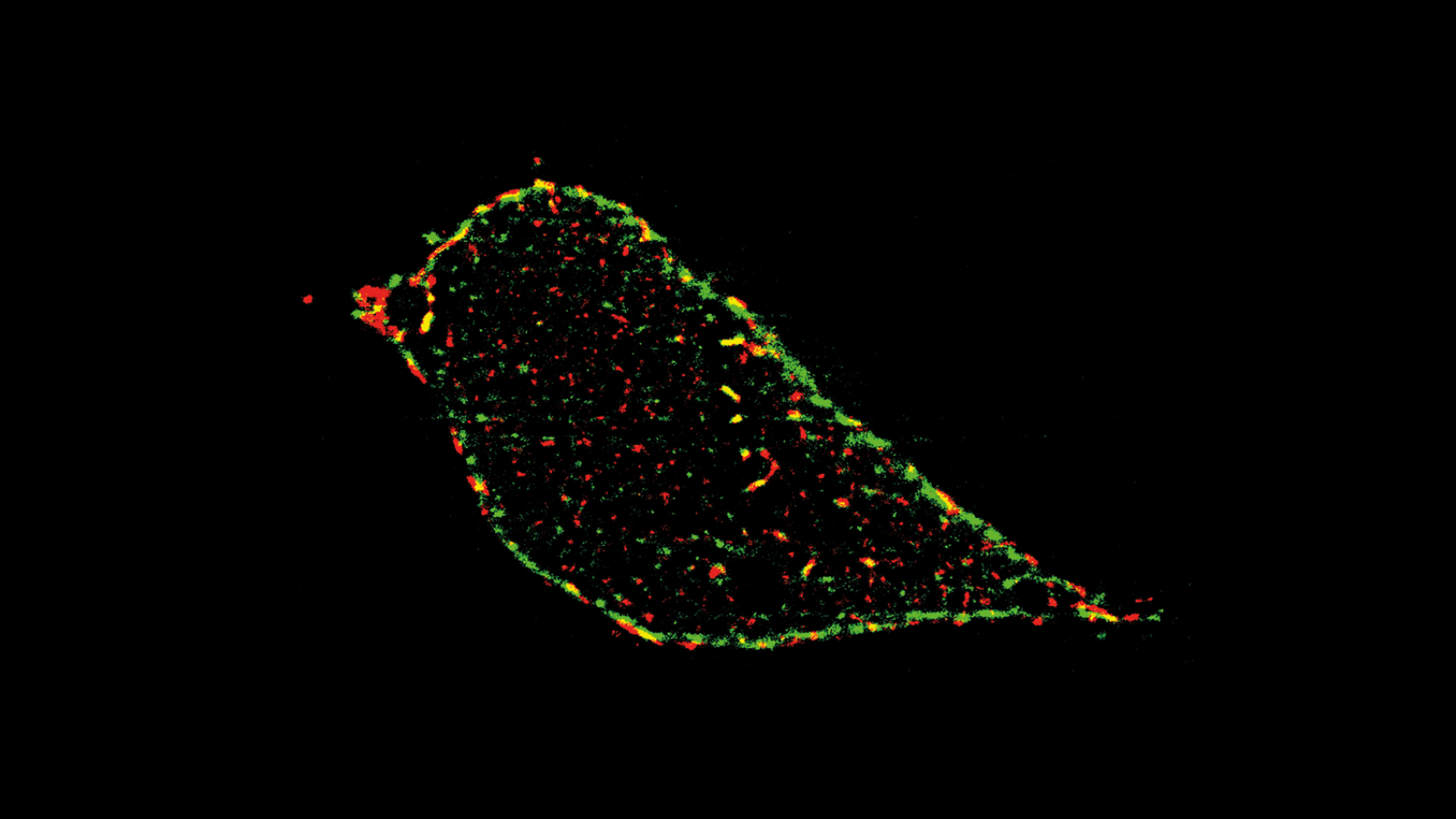Small, aggregated proteins capable of entering cells have been shown to cause distinctive toxic effects in Parkinson’s disease and dementia with Lewy bodies, according to a new study led by Dr Yu Ye (UK DRI at Imperial).
The findings, published in the journal Proceedings of the National Academy of Sciences (PNAS), offer useful insight into the underlying mechanisms of these diseases, and highlight potential future targets for disease detection and therapeutic intervention.
Both Parkinson’s disease and dementia with Lewy bodies are associated with abnormal deposits or ‘aggregates’ of a protein called alpha-synuclein in the brain. The protein accumulates in different sized structures, from small, soluble entities to larger fibre-like structures known as ‘fibrils’.
Increasing evidence suggests that the small soluble aggregates are more toxic to cells than the larger fibrils. However, small aggregates are more difficult to detect within live cells and brain tissue, and are therefore more challenging to characterise and quantify.
In this study, Dr Ye’s team aimed to provide insight into how small aggregates damage cells in neurodegenerative diseases. Using a specialist microscope, and a fluorescent ‘tag’ to label the aggregate, they showed it was possible to precisely detect and measure small protein aggregates in live cells and mouse brain tissue.
The study revealed that protein aggregates below a certain size (450 nanometres) entered cells more easily, whereas larger aggregates were prevented from entering by the plasma membrane, the barrier that separates the interior of a cell from the outside environment.
Aggregates below this size were found to more easily penetrate cells
Our experiments showed that while larger aggregates were effectively ‘filtered out’ by the plasma membrane, smaller aggregates were able to slip through, easily penetrating and entering cells.Dr Yu YeGroup Leader at the UK DRI at Imperial
Surprisingly, when the team then compared the small aggregates, made up of alpha-synuclein, in donor brain tissue of individuals with Parkinson’s disease and dementia with Lewy bodies, they found that although the same size, an aggregate from Parkinson’s disease is more toxic than one from dementia with Lewy bodies. Confirming this observation in multiple donors of both diseases, the team could therefore determine that aggregates from the different diseases had distinct toxic effects on cells.
Dr Ye continued:
“This indicates that the alpha-synuclein protein behaves differently depending on the disease and that aggregates exhibit disease-specific features. This knowledge could allow us to detect the type of dementia a person has based on the type of aggregates present, as well as how advanced their disease is. In future, these disease-specific features may also be useful targets for therapeutic intervention for the different neurodegenerative diseases."
Dr Ye's lab was launched in 2020 in the middle of the pandemic. He underscores the need to support talented ECRs:
“This multi-disciplinary research would not have been possible without strong teamwork driven by Dr Michael Morten and Liina Sirvio. It shows the importance of creating a well-functioning lab ethos and supportive culture can achieve well despite the lockdown."
Excited by their findings, Dr Ye and his team are now applying this approach to other neurological disorders such as Alzheimer’s disease and frontotemporal dementia, examining aggregate features that determine the toxic effects seen in different dementia types.
To find out more about Dr Ye's work, visit his UK DRI profile. To stay up to date on the latest research news and Institute updates, sign up to receive our monthly newsletter, ‘Inside Eye on UK DRI'.
Reference: Morten MJ, Sirvio L, Rupawala H, Mee Hayes E, Franco A, Radulescu C, Ying L, Barnes SJ, Muga A, Ye Y. Quantitative super-resolution imaging of pathological aggregates reveals distinct toxicity profiles in different synucleinopathies. Proc Natl Acad Sci U S A. 2022 Oct 11;119(41):e2205591119. doi: 10.1073/pnas.2205591119.
Article published: 20 October 2022
Banner image credit: Dr Yu Ye
